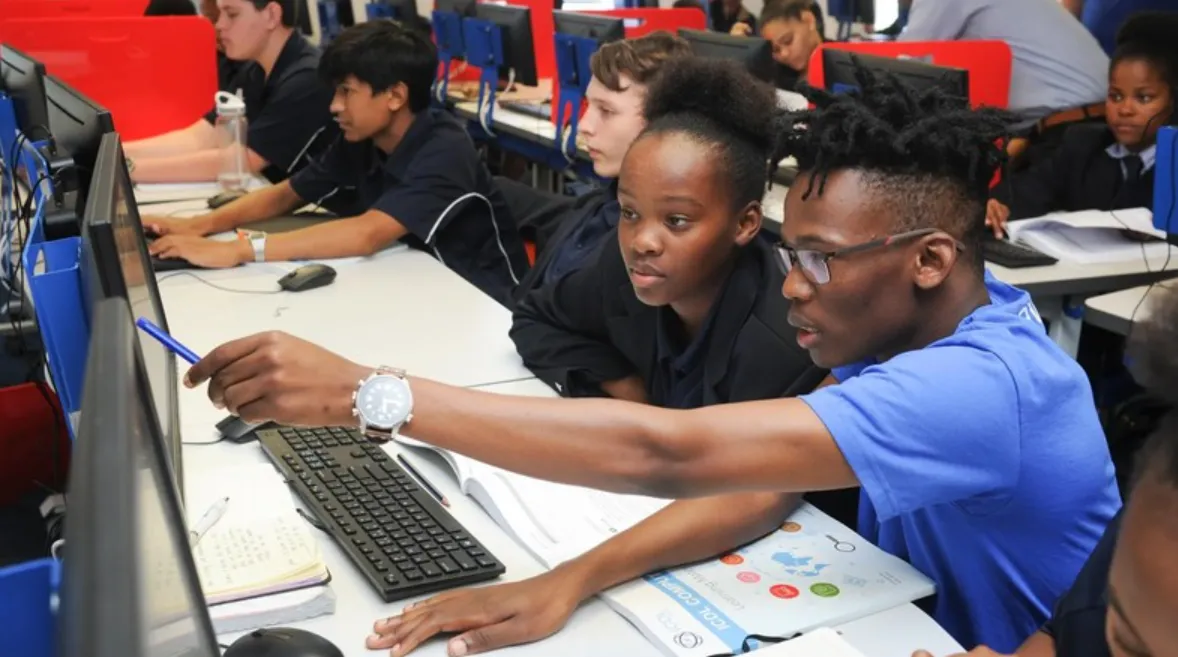The future of education is being shaped by advancements in technology, creating a shift that promises to revolutionize how students learn and how teachers teach. From interactive digital tools to personalized learning experiences, technology is not only making classrooms more efficient but also more engaging, inclusive, and accessible. As we venture further into the digital age, the classroom of tomorrow will look significantly different from the one we know today. This article explores how technology is transforming education, its current impact, and its potential for the future.
1. Personalized Learning
One of the most profound ways technology is transforming education is through personalized learning. In traditional classroom settings, teachers often face the challenge of addressing the diverse learning needs of students within a single lesson plan. Every student learns differently, with varying speeds and preferred methods of learning. However, technology is allowing for more individualized instruction that tailors lessons to the specific needs of each student.
Adaptive learning software, powered by artificial intelligence (AI), is already changing the way students interact with educational content. These platforms monitor student progress and adjust the difficulty level of lessons based on their performance. For example, platforms like DreamBox and Knewton use AI algorithms to track a student’s responses and offer content that adapts in real-time, ensuring the student is constantly challenged but not overwhelmed.
Such technology not only accommodates different learning speeds but also allows for mastery-based learning. Students can progress through material at their own pace, ensuring they fully understand a concept before moving on to the next one. This personalized approach to education fosters a deeper understanding and helps build confidence in learners.
2. Blended Learning Environments
Blended learning is another innovative trend that combines traditional face-to-face instruction with online learning. By integrating online lessons and digital resources with in-person teaching, blended learning creates a flexible and more dynamic classroom environment.
The key advantage of blended learning is its ability to offer students more control over their learning. Students can access educational content online, review lessons at their own pace, and engage in interactive digital exercises. This means that when students are in class, teachers can focus more on facilitating discussions, addressing questions, and encouraging critical thinking, rather than just delivering content. The classroom becomes a space for collaboration and application of knowledge, rather than a place where information is merely transmitted.
Flipped classrooms are a common example of blended learning. In a flipped classroom, students watch instructional videos or read materials at home and then come to school prepared to engage in discussions, group projects, and problem-solving activities. This model allows teachers to focus on higher-order thinking tasks and more personalized instruction during class time.
3. Augmented Reality (AR) and Virtual Reality (VR)
The use of augmented reality (AR) and virtual reality (VR) is another cutting-edge development in educational technology. AR and VR offer immersive experiences that bring abstract concepts to life in ways traditional classrooms cannot. With AR, students can interact with digital objects overlaid onto their physical environment through devices like smartphones or tablets. For instance, a student learning about the human body could use AR technology to explore 3D models of the heart or brain, providing a deeper understanding of anatomy.
On the other hand, VR takes students into fully immersive, 3D virtual environments. For example, history lessons can be brought to life by virtually transporting students to ancient civilizations or historical events. In a geography class, VR can simulate a trip to the Amazon rainforest, allowing students to experience ecosystems firsthand. The potential of VR and AR is immense, providing students with experiences that enhance their understanding of complex subjects and improve memory retention.
Moreover, AR and VR are highly beneficial in vocational training, offering hands-on practice in fields such as medicine, engineering, and architecture. Medical students can perform virtual surgeries to practice their skills before working with real patients, and engineering students can experiment with designs in a virtual space before creating physical prototypes.
4. Artificial Intelligence and Machine Learning
AI is increasingly becoming a driving force in educational technology. From chatbots and virtual tutors to intelligent content creation tools, AI is making education more efficient and accessible. AI-powered tools can offer instant feedback to students, answer questions, and even grade assignments, giving teachers more time to focus on critical tasks such as mentoring students and developing personalized learning plans.
AI can also assist in administrative tasks, streamlining the process of grading, attendance tracking, and curriculum planning. Additionally, AI-driven platforms can detect patterns in student performance, identifying those who may need extra support. By analyzing data, AI can provide insights into the effectiveness of teaching strategies, allowing educators to continuously improve their methods.
One notable example of AI in education is the use of virtual teaching assistants. Tools like Jill Watson, an AI-powered teaching assistant, are being tested in classrooms to help students with frequently asked questions, offer additional explanations, and provide on-demand support. This type of AI is capable of providing personalized responses to students, allowing for real-time support outside traditional class hours.
5. Global Access to Education
Technology is breaking down geographical and financial barriers that previously limited access to quality education. Online courses, MOOCs (Massive Open Online Courses), and educational platforms such as Coursera, edX, and Khan Academy have opened up opportunities for learners across the globe. Students in remote areas now have access to the same high-quality content as those in well-funded urban schools.
For example, students in developing countries can access free online resources that would otherwise be unavailable to them due to a lack of educational infrastructure. This democratization of education is leveling the playing field and creating new opportunities for students everywhere, regardless of location or socioeconomic status.
Moreover, the availability of educational content in multiple languages makes it easier for non-native English speakers to access global learning materials. By embracing technology, education is becoming more inclusive and equitable, ensuring that all students, regardless of their background, have the opportunity to succeed.
6. Collaboration and Communication Tools
Technology is also transforming the way students collaborate with each other and communicate with teachers. Online collaboration tools such as Google Classroom, Microsoft Teams, and Zoom are enabling students to engage in real-time discussions, share resources, and work on group projects, even when they are not physically in the same space.
These tools not only facilitate communication but also foster teamwork and problem-solving skills. Collaborative learning allows students to engage in peer-to-peer learning, exchange ideas, and learn from one another. Additionally, real-time feedback from teachers and classmates encourages continuous improvement and greater student engagement.
In higher education, students can attend virtual lectures, participate in webinars, and engage with professors and peers from around the world. As a result, learning is no longer confined to the classroom but can happen at any time, anywhere.
7. Gamification and Interactive Learning
The integration of gamification in education is another significant trend that leverages technology to increase student engagement. By incorporating elements of games, such as rewards, challenges, and competition, educators can make learning more engaging and fun. Games can be used to reinforce concepts, teach problem-solving skills, and encourage critical thinking.
Educational apps like Duolingo, which uses gamification to teach languages, and Kahoot!, which turns quizzes into competitive games, are examples of how technology can make learning interactive and enjoyable. These tools appeal to students by tapping into their love for games and making learning feel more like a rewarding experience rather than a task.
Conclusion
The future of education is bright, and technology plays a pivotal role in shaping it. From personalized learning experiences powered by AI to immersive VR environments that make learning more engaging, the possibilities are endless. Technology has the potential to transform classrooms into dynamic, interactive spaces that cater to the diverse needs of students and educators alike. As education continues to evolve, embracing technology will be essential in preparing students for the challenges and opportunities of the future. The classroom of tomorrow is already here — it’s just a matter of harnessing its full potential.



